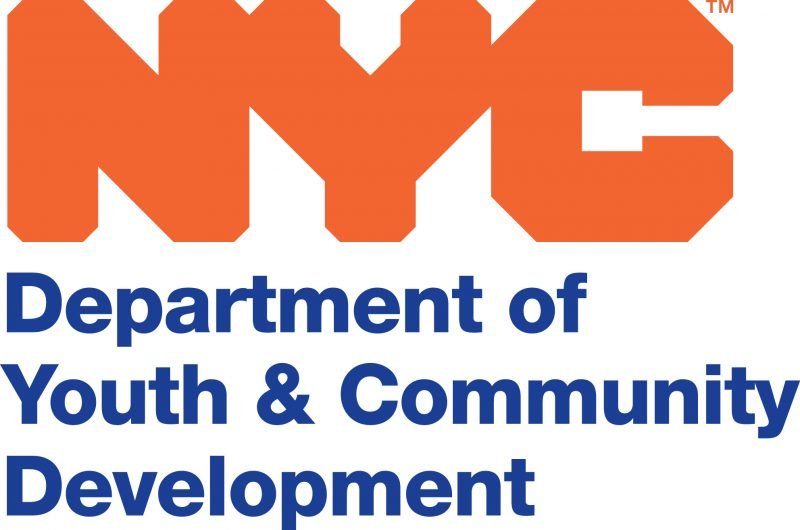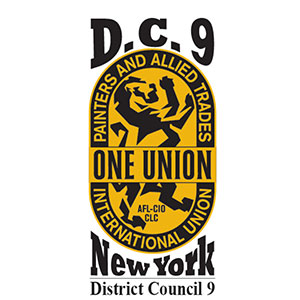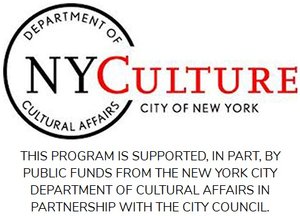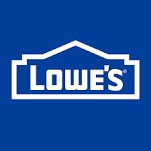Mission + History
Mission:
“PortSide NewYork is a living lab for better urban waterways. We bring WaterStories to life.”
We advocate for more maritime uses on NYC’s waterfront, a more maritime focus to “waterfront revitalization.” #Piers4Boats
“This is the generation that will be known as the generation that rethought the city’s relationship to the waterfront. We have an opportunity to get it right, and we think that a cultural center like PortSide with a home on the working waterfront will be a great place to do that.”
Please see this one-pager about what PortSide does and our impact. PortSide is innovative, impactful, and consistently wins awards.
We create education programs for students in Title 1 schools and others.
Our job training programs serve high school students and the union DC9.
We have the region’s only African American Maritime heritage program.
We created and grow an inclusive virtual museum Red Hook WaterStories.
We did significant Sandy recovery work, winning a White House award and honors from the NYS Senate, do ongoing resiliency planning for Red Hook.
The PortSide you see is but a sliver of what we are trying to do. NO, WE ARE NOT A HISTORIC SHIP PROJECT. For 17 years, we have been fighting to get space and permissions to create an innovative maritime center, one that serves the working waterfront AND the public, that uses maritime for community and economic development, and that shows how and why to grow maritime in this harbor. Read about that below.
PortSide’s History, the saga
I, Carolina Salguero, PortSide’s founder, am telling PortSide’s arduous backstory. I am deviating from the usual nonprofit rah-rah talk of success to reveal institutional challenges and crises as a way to show the perverse impediments to all maritime activity on NYC’s waterfront, ours and those of others. For an overview of PortSide programs over time, please see Program History Highlights. For a list of our awards and acheivements, go here.
This story was first uploaded at the end of 2019 with plans to launch a public awareness campaign in early 2020. However, the pandemic hit in March, I got Covid right away; and after I recovered, we decided to hold off telling this story until the pandemic was less urgent and new. Then, we waited for the raft of NYC newly elected officials to settle in; that brings us to 2022.
I founded PortSide in 2005 to rethink NYC’s relationship to the harbor by creating an innovative maritime center - a new model for NYC - showing how to combine the working waterfront and public access (busting local zoning conventions) while fostering community development. The policy goal was to make NYC’s waterfront revitalization include more maritime, from freight and passenger boats to education and culture related to the harbor. This would be an alternative to the trend of putting big box stores and then luxury condos along the shore and treating the water as just something to look at – meaning esplanades and waterfront parks with no interaction with the water itself. Our focus was the BLUEspace, the waterways themselves, not the land along the edge captured by the word “waterfront.”
This proposed PortSide center would have a hyperlocal focus on benefiting the Red Hook community while also serving visitors coming by land and sea. The physical PortSide would be the “living lab for better urban waterways” where we would “show by doing,” and be a “do tank” not just a think tank. Its activities would be cited as examples in our advocacy work.
Our first business plan of 2005 was based on having 8,500 square feet of building space where our programs would be concentrated (next to the Fairway in Red Hook, Brooklyn) and on having the ship MARY A. WHALEN serve primarily as a dock for visiting vessels (tugboats shopping at Fairway, educational ships, tour boats and more) with the MARY making occasional visits to other communities. The towing industry were major targets of our proposed pipeline to marine careers, and we did extensive market research into salaries and hiring practices as well as their food shopping needs, along with research into what kinds of visiting vessels we could attract to the location, what we’d earn from that in landing fees, and how this would benefit the Red Hook retail and investor pool by bringing in visitors, creating the first big year-round attraction in the neighborhood, and helping local residents by providing culture, education and job training experiences. The tug dock-n-shop also meant revenue for us, $150,000 a year as Fairway would give us 10% of the gross receipts for all tugboat shopping that docked at us.
We would serve the diversity of New York City afloat and ashore, bring those two worlds together, provide services to the working waterfront and provide, for the benefit of all, maritime-themed programs in education and culture (exhibits, films, talks, conferences, programs for school groups, boatbuilding for youth, classes for adult mariners run by partners) and a pipeline to marine jobs.
After creating the business plan, the developer did not provide the space. I decided to buy the ship anyway in 2006 and seek a new location. I joke that I went from being the founder of a place to the mother of a homeless ship. Homelessness is, however, as exhausting a condition afloat as it is ashore and not much of a joke at all.
New York City is not welcoming to innovative waterfront land-use ideas, as I now more keenly know; so for 10 years, we negotiated with the forces I founded PortSide to change while we struggled to find a long-term, publicly-accessible home while operating our ship as a 613 ton “pop-up.” We have looked at over 20 sites and negotiated with many.
From summer 2006 until summer 2015, our hefty, 172-foot ship MARY A. WHALEN was based most of the time in the Red Hook Container Terminal, and we would negotiate for months to get permits so our ship could visit locations for short-term programs.
That period had PortSide maneuvering to survive battles between the Port Authority and their tenant American Stevedoring, our host in the container port (the Port Authority wanted no public access inside that port), battles between the Port Authority and the NYC Economic Development Corporation (EDC) — talk about a clash of Titans — due to similar thinking about Atlantic Basin which the Port Authority owns and the EDC rents, plus challenges at lots of waterfront parks and sites owned by the public sector.
From 2006 to 2015, twenty days was the max lead time on any waterfront permit we used, even if we negotiated for months to get the permit. Funding for nonprofits requires long-lead times to seek grants and sponsors for programs that are delivered consistently not sporadically, so securing funding on that kind of notice was fuggetaboubit impossible.
We learned to be thrifty and speedy (responding to short-notice permit approvals) and flexible about location: we also popped up in storefronts, parks, a shipyard, and on other ships. However, the resulting sporadic nature of PortSide programs also made it confusing for people to grasp the scope of our intentions, a difficulty compounded by the obscurity of maritime to most New Yorkers. “What are you trying to do?” I’ve often been asked.
Maritime is a lost language in NYC.
This city was once fluent in that language, but no more: Waterfront parks do not design piers for boats (or design them badly). Local media declared maritime a has-been, and the real estate sector trumpeted that notion in support of its efforts to score waterfront property. The maritime industry added to its own invisibility with a lack of PR and a “who’s asking” approach to outsiders. The public school system makes almost no use of the harbor. (The creation of one great harbor school is a drop in the bucket.) Local maritime cultural institutions are small and not united, and many focus on the past, making them limited allies given PortSide’s future focus.
The fact that PortSide had no building and was reduced to a historic ship added another layer of confusion. Most people presumed we were another preservation project, a history project. Our forward-looking goals were hard to see while we were so associated with an old ship. For years, we didn’t call the tanker a “historic ship” in an effort to avoid all that. We finally reversed ourselves, thinking “better to have one familiar aspect.”
Three years into this real estate saga, we thought a solution was near.
We had responded to a 2006 RFEI and 2007 RFP from the New York City Economic Development Corporation (EDC) to have a home in Atlantic Basin (those are part of the EDC’s long-running effort to try and figure out how to use Atlantic Basin).
In 2008, the EDC began making presentations about plans for Atlantic Basin, making public promises that PortSide would have a home with about 6,500 square feet of building space in the Pier 11 shed, 600’ of pier to program, and use of a large asphalt area ashore/outdoors. The EDC asked us to do “interim programs” here in 2008, 2009, and 2010. We faced considerable pushback from the Port Authority summer 2010 on what was our first multi-week permit, all of 59 days. The Port Authority cut off of the electricity and buried us in ever-evolving permit requests. We soldiered on in what I called “The Survivor version of cultural programming.” In the fall, the EDC asked us to do an architect’s building code review for the office suite in part of the Pier 11 building allocation, which we did. Then, in spring 2011, the EDC said they would not give us the space.
Things were dire.
Our temporary home in the container port had gone from tough to untenable. In 2008, federal regulations had kicked in, requiring that people needed a Homeland Security ID, a TWIC card, to walk to our ship across the port unescorted. Each TWIC card could escort 5 people; our visitors were thus limited to our number of TWIC card holders times five. Our regular staff was four.
September 2011, the Port Authority tried to evict us when they evicted our hosts American Stevedoring, and I got Councilman Brad Lander to intervene. As push back, in February 2012, the Port Authority said only one PortSide TWIC card would be valid for escorting guests, mine. That meant PortSide was limited to 5 visitors at a time, and I had to escort all visitors back and forth the 6 blocks to the gate. One Monday, I made 10 such trips. I learned to ride two bikes at once, I rode mine and pushed a bike for a visitor.
We developed gallows humor. “MARY needs better berth control” was one punning slogan, but we were desperate.
On February 28, 2012, we announced that we would close by April 30th if we did not find a home. We launched a petition which put our story in a larger context and called for conditions to improve for all historic ships in NYC. Our plight was covered by high profile media including CBS and this New York Times article. Offers of help poured in. We entered into negotiations with two sites and did not close in April, continuing negotiations locally and in Yonkers into the fall; and we moved our office off the boat into a donated storefront so people could meet with us.
Then hurricane Sandy hit.
During Sandy, I, our Historian/Curator Peter Rothenberg and our ship cat Chiclet stayed aboard and protected the ship from Sandy damage; but Sandy damaged everything we had off the ship – a lot of stuff – and flooded all our real estate negotiations to a standstill.
I figured no one was coming to help a nonprofit that was largely closed (due to being locked up in the container terminal), so I told the crew, “we are not going to sit our hands and wait, let’s go ashore and help.” That was the genesis of PortSide’s Sandy recovery work for Red Hook.
Sandy was devastating for PortSide; but it kept us in Red Hook and sustained us by giving us an intense, urgent purpose: helping our neighbors. Sandy also changed our programs because we realized that we needed to talk about the destructive aspects of the waterways whose benefits we had been touting.
I and PortSide were honored by the White House for saving our ship from the storm and for Sandy recovery work in Red Hook. We were honored by the NYS Senate for our Sandy work. Senior members of the federal disaster recovery team came to meet wiht us for three and a half hours to harvest ideas. I was appointed by the Governor’s office to Red Hook’s NY Rising committee, part of a state-wide program to help hurricane-damaged communities create a local resiliency plan. PortSide was homeless but a recognized player in recovery and resiliency planning, a classic PortSide dichotomy! And we started our long struggle with FEMA to do our own Sandy recovery project which involved lots of red tape, something that defined our workday already.
While tackling such external impediments and dramas, and operating in the cramped quarters of a retired 1938 oil tanker under-restoration, PortSide continually created many harbor firsts with our innovative waterfront programs (we call them WaterStories) on the MARY A. WHALEN, other ships, ashore and in the digital realm (see list above).
We consistently win awards, honors and appointments to government committees.
We serve diverse stakeholders, and our work has impact, including efforts focused on policy change, Sandy recovery work and resiliency planning, culture, youth education, or workforce development. Here are some examples:
Education: In 2019, after just over a semester of PortSide programs with Red Hook’s PS 676 inspired that school to become Brooklyn’s first maritime themed elementary school! In 2021, the DOE announced that 676 will become NYC’s first maritime middle school.
Resiliency: In addition to our local Sandy recovery work and resiliency education, we inspired a national program, FEMA’s Sandy High Water Mark signs, adopted in NYC by NY Emergency Management.
Opening waterfront spaces to the public: We created the first public programs in a Port Authority port, including an opera aboard our ship, and helped make that historically remote agency more open to community programs and education; and in 2020, the Billion Oyster Project expanded to the space we last used in the container port. We did the first public programs at GMD Shipyard and also in Atlantic Basin, Red Hook over several years, cracking open this place that is now publicly-accessible 24/7. We see many of our ideas in NYC’s last comprehensive waterfront plan Vision 2020 and subsequent site developments.
Boating: We invented kayak valet, a practice now used around the harbor which helps people visit locations by kayak.
Advocating for waterborne freight and passenger movement: We are part of the coalition of voices that pushed for more ferries leading up to the launch of NYC Ferry. Since our early days, we have talked about increasing use of the waterways to move freight within the city and regionally from our ports. One of our arguments was that if we manufactured less, we would be shipping more and should use the waterways to decongest our roads and reduce our carbon footprint. That was obscure talk at the time of our 2006 testimony. Fourteen years later, the surge in e-commerce now has non-mariners talking about using the waterways to bring packages to the ecommerce last mile fulfillment centers coming to Red Hook and Sunset Park. In 2018, the EDC launched Freight NYC. In 2019, the EDC put out an RFP to begin distributing food from the Hunts Point market by water, just as we advocated in 2005.
During all that, PortSide continued pushing for space and permits to create the multi-service maritime center of our original goal.
In May 2015, ten years after PortSide was founded, thanks to the support of many elected officials and community stakeholders, especially Councilman Carlos Menchaca, we secured our first docking permit for longer than a few weeks (it was for 3 years) and were able to leave the Red Hook Container Terminal. Menchaca had the EDC over a barrel; they needed his approval to develop SBMT in Sunset Park, and he refused until they signed an LOI obliging them to honor unfulfilled promises to the community and ensure that SBMT delivered community benefits not just revenue to the EDC.
5/29/15 we left the port in the video above, exhausted from the struggle but hopeful, and returned to Atlantic Basin in Red Hook, Brooklyn where we are now. From 2008 into 2011, the EDC had promised us a home here with building space, use of the asphalt, and half the pier to program. In 2015, we only got berth space for our ship. The ship was and is highly limited as an operating space:
The MARY A. WHALEN has little interior space. She is not architecturally suited for many programs beyond being a museum of herself. We’ve been inventive about re-purposing the tanker, but we need building space period. Our current indoor program space is basically a kitchen and hallway (the ship’s galley and fidley)! During Covid, none of those spaces are big enough to socially distance for programs or to have enough staff in our offices that are crammed into former cabins.
We are forced to use a ship while under restoration! After years of being locked up in the container terminal under tightening security regulations that shut down our volunteer program, the ship was bedraggled. She needed several summers of exterior and interior painting and other repairs before being in condition for many programs. It’s hard to restore the interior with our offices inside.
We can’t earn revenue with the ship yet since she does not have the Coast Guard equivalent of a building permit. For two years, we worked with the Coast Guard to get “Attraction Vessel” status that will allow us to rent the boat for events, accept donations aboard and charge a fee for programs. The Coast Guard’s first assessment was that “the ship is not a ship” from a regulatory point of view. We appealed that; the ship is now a ship in their eyes. We now need to haul the ship out of the water in a shipyard for maintenance and for the Coast Guard to inspect before they will accept her as an “Attraction Vessel.” We will need to raise money for all that.
Soon after we returned to Atlantic Basin in May 2015, I learned that the previously-promised building space in the Pier 11 shed, the warehouse adjacent to our ship, was empty and began efforts to get that space. We also sought permission to host visiting vessels of various types to grow program action on the water.
At the end of 2017, the president of the EDC offered PortSide a means to get the building space: complete a new business plan. We worked on the business plan during 2018 and presented it January 2019. Check out the many and diverse letters of support sent to the EDC on our behalf! People want a full-blown PortSide! Let’s do it already!
From Spring to August 2019, the EDC floated alternative scenarios involving PortSide, none of which gave us dedicated building space we could control. The best offer was space we could use now and again, eg continue being a pop-up, which does not allow us to have enrollment programs like the youth boat building shop, a wet lab, adequate office space, room for exhibits. This is why I intended by December 2019, to start telling this story; but the pandemic hit in March 2020 before we rolled out a PR plan relating to the story on this webpage.
As to visiting vessels, summer 2018, we got permission for SeaScout boats to tie up and visit as well as the historic ship AMISTAD. We don’t yet have permission to host the full scope of visiting vessels we seek. The EDC rejected proposals in our 2018 business plan for any revenue-generating visiting vessels to tie up alongside our ship. They said NO to the tugboat dock-n-shop of our original plans; they even said no to a small commercial first-responder vessel (like a AAA of the water) that would add to harbor safety AND be available for PortSide education programs (both general education and mariner training). That boat is too small to tie-up directly to the pier, so the EDC program DockNYC could not host it here along the pier, so PortSide would not be taking business from the EDC. This is the kind of “no” that is more punitive than thoughtful; AND two years into the pandemic, it reflects discrimination because another tenant on this pier was allowed to grow a flotilla of subtenant boats during Covid and have tugboats come in for services.
In 2019, I began seeking relief from the stultifying permits (“ops plans”) required to operate in Atlantic Basin: we were being required to submit a permit request, for every event of over 20 people, to 3 layers of site managers (Port Authority, EDC, dockmaster) even if the event is completely on our ship and not using asphalt leased to others, despite the fact that our ship insurance covers us for more people (and we have never had an incident or injury) and Atlantic Basin is now a public access site with groups larger than 20 coming and going. This ops plan process prevented many events from occurring, especially ideas brought to us by the community, as people have no idea that more than 30 days’ notice is usually needed to get an idea through this system. We made significant progress with the Port Authority which now only wants notice for events over 75 or 80 people.
In the few years since we left the containerport, we advanced our FEMA Sandy recovery project (still open), did the 2018 businesses plan, poured it on doing ship restoration, and — to make us grant-ready — built a consistent resume of programs and grew the board. As of fall 2019, I think we are ready.
I expected that our solid business plan would lead to the EDC’s agreement to finally give us the building space. I was sure that would, on top of relieving space pressure on PortSide, trigger excitement, which helps fundraising, and also give us a place to do that fundraising while we continued negotiating with the Coast Guard. Instead, the EDC points to our small budget as a reason not to provide the space. The EDC’s treatment of PortSide stunted our budget. PortSide’s condition is like the stories of redlining that plagued Red Hook for years: deny someone what they need to grow, and then say that the struggles are their fault. The EDC should instead look at the quality of what we do and live up to the word “Development” in their name and foster our growth by providing space.
PortSide has been making plans for this Atlantic Basin location since responding to the EDC’s 2006 RFEI and 2007 RFP, so we have many ideas and partners identified. With your help, we believe that getting the building space can become a reality so that PortSide can fulfill our vision of creating an impactful living lab for better urban waterways!
Over the years, while directly serving the public, in our efforts to make NYC’s waterfront revitalization more maritime-focused, we have written policy papers and testimony, spoken on panels, conferred with elected officials and answered questions from the media. Some change has come, especially much about the former 2010 comprehensive waterfront plan called Vision 2020, but few of those maritime recommendations were implemented.
We planned 2020 advocacy projects, and cultural programs to deliver advocacy messages, but the pandemic hit. Our usual programs were impossible as the ship spaces are too small to do socially-distant programs (or even socially-distance staff). City funding dried up; our budget shrank. We created new programs by installing PortSidePark next to the ship (evicted by the EDC on 9/23/22), and virtual programs such as our eWaterStories inventory, daily livestreams of the sunset (over 160 in 2020) and more. We focused on the opportunity to get a historic engine from Missouri to restore our ship engine which we did in August. In short, our 2020 changed dramatically like everyone else’s.
In 2021, we returned to advocacy work and submitted a long, detailed statement to the Comprehensive Waterfront Plan (CWP) process of the Department of City Planning. That plan will be in effect for 10 years. Our statement included a call to finally right-size PortSide along with testimony demonstrating how little of the last plan, Vision 2020, had been put in effect and how to improve waterfront planning and operations. Over 200 people submitted comments in support of PortSide’s need for more space; TWO THIRDS OF ALL comments to the CWP were about PortSide!
However, the final CWP, though it touts the importance of community engagement, input and stewardship, completely ignored all those comments and says nothing about PortSide in the final CWP. We WERE mentioned in Vision 2020, so the silence about PortSide in the CWP is significant.
We plan to put our years of real estate challenges to good use. This story here is part of that. All that we faced while seeking a permanent home and temporary site permits – and still face now -- make us informed about what needs improvement in this harbor. As a result, on 11/7/22, PortSide launched the campaign #rethinkEDC to have the NYC EDC be reassessed and improved.
To further our progress, please donate, volunteer and/or join our board, and share this link. I thank you for your support!
Select Awards, Honors & Appointments
2022 | “Women of Distinction” award from NYS Assemblymember Jo Anne Simon, honoring Carolina Salguero.
2021 | “Covid Everyday Heroes” award from Brooklyn Borough President Eric Adams for creation of PortSide Park.
2019 | Honored as a “Spirit of McAnaney” for efforts supporting preservation and public spaces in New York City by the Friends of George McAneny, honoring Carolina Salguero
2019 | Awarded City Lore “People's Hall of Fame” Waterfront Hero.” Presented to Carolina Salguero
2017 | Presented with Congressional Record by US Congresswoman Nydia Velazquez citing the importance of the ship MARY A. WHALEN and PortSide programs
2014 | Appointed by District 38 Councilman Carlos Menchaca to the Sunset Park Task Force to advise the NYC Economic Development Corporation (EDC) about development plans for the South Brooklyn Marine Terminal
2013 | White House’s “Champions of Change” award for our work preparing for hurricane Sandy (protecting the ship) and recovery work benefitting our neighborhood.
2013 | Honored for our Hurricane Sandy recovery work by the NYS Senate. (Resolution sponsored by Senator Velmanette Montgomery, co-sponsored by Senator Daniel Squadron)
2013 | Appointed by Governor Cuomo's office to Red Hook's NY Rising committee, a statewide program to make communities more resilient
2013 | Received the "New York Harbor Historic Ship Steward Award of Excellence” from The National Maritime Historical Society
To further our progress, please donate, volunteer and/or join our board, and share this link. I thank you for your support!



















